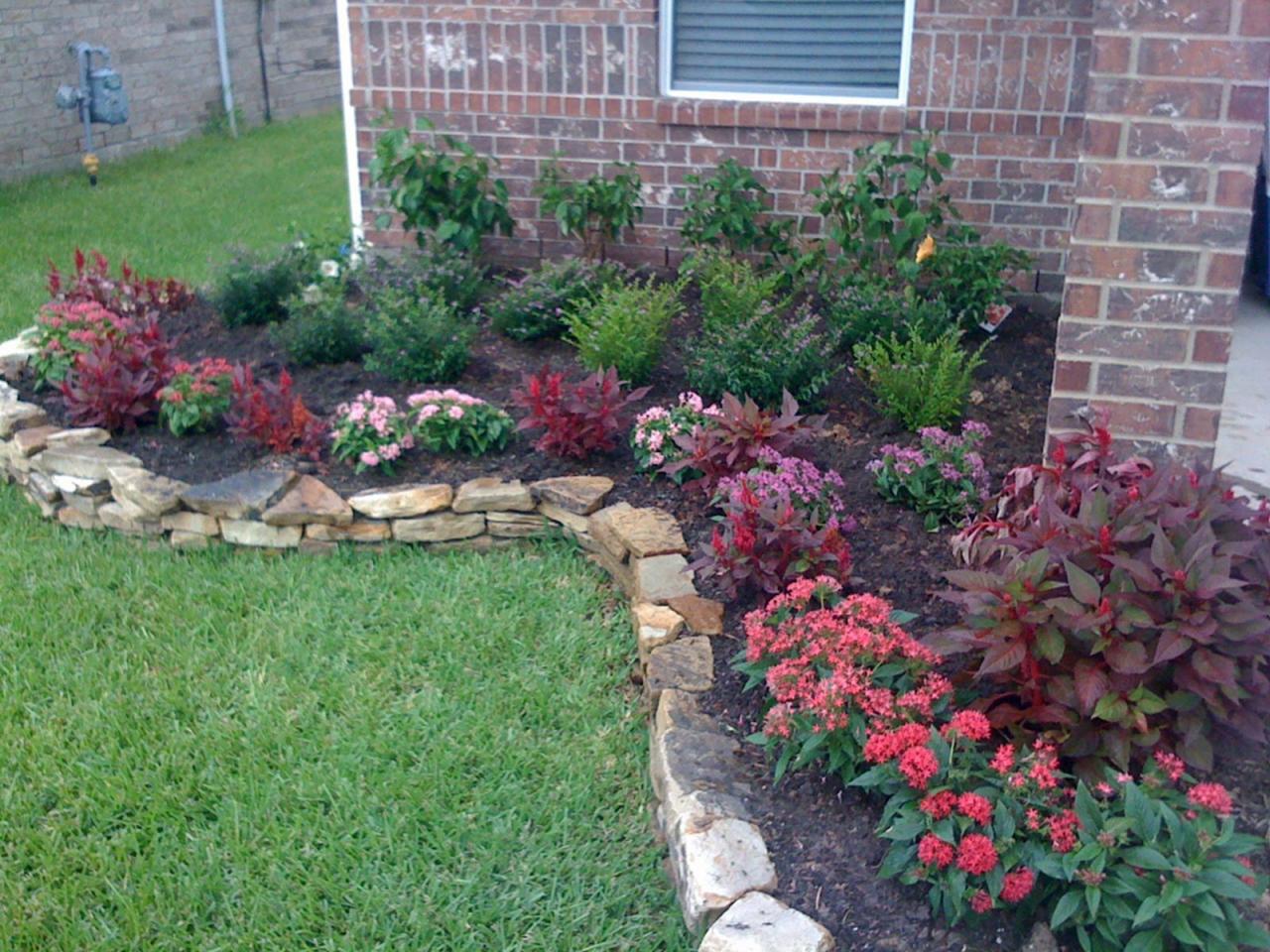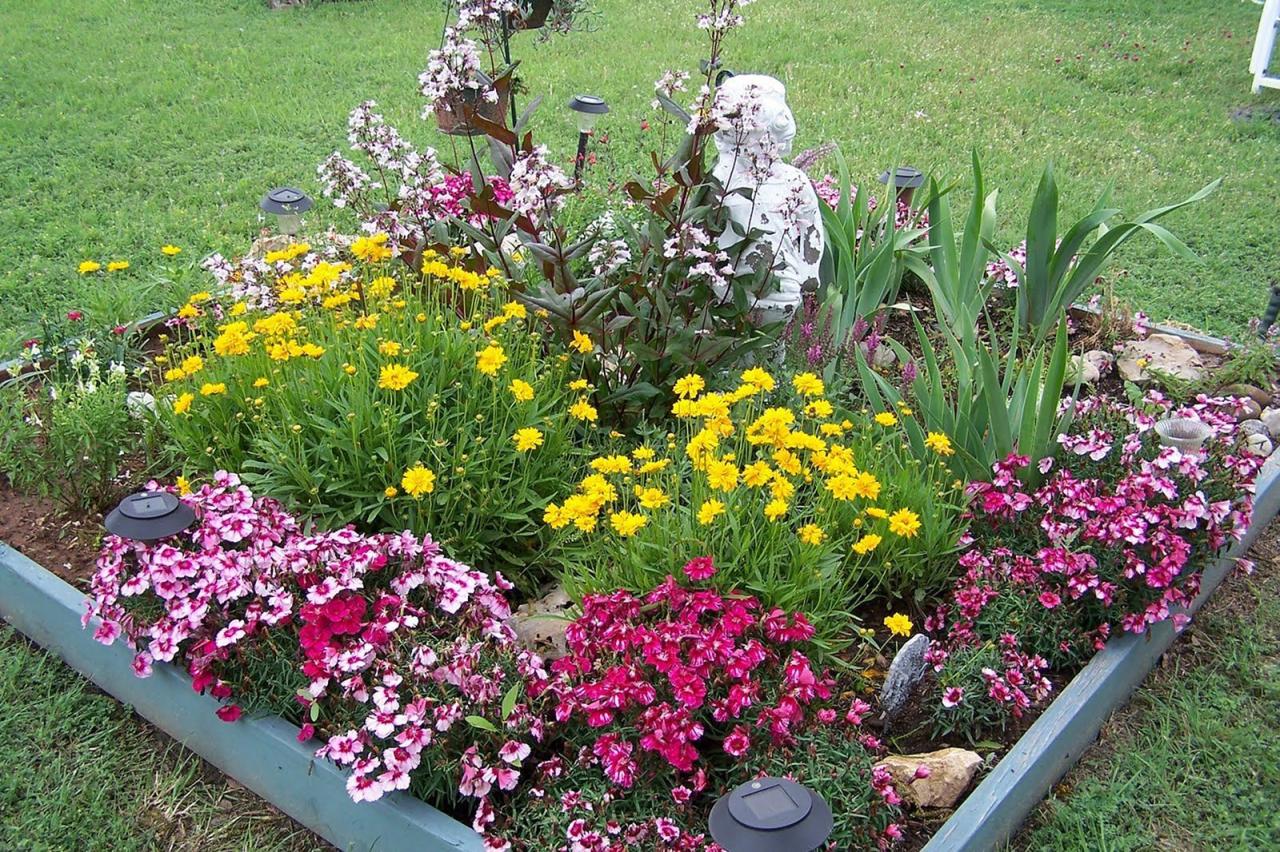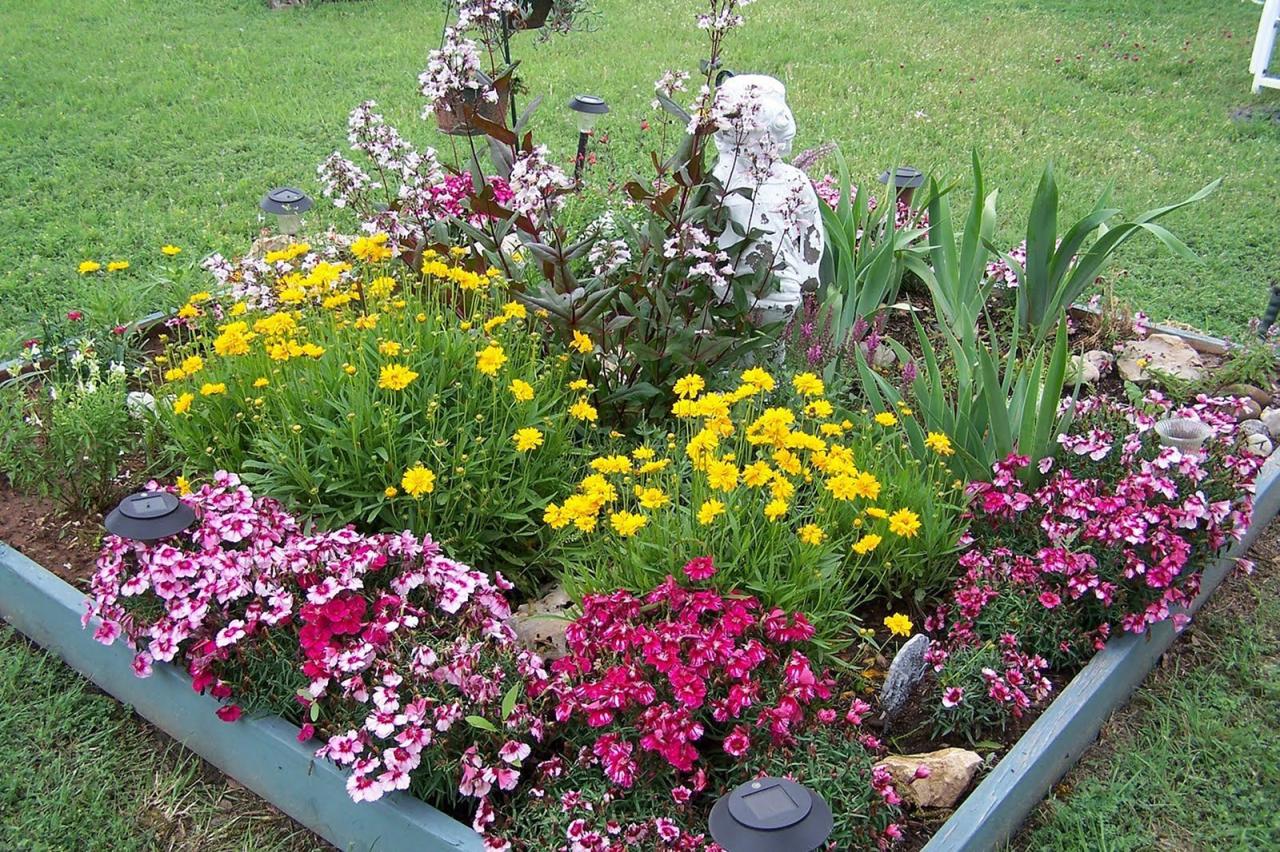What Flowers Don’t Work Well in Raised Beds? Raised beds offer a fantastic way to grow beautiful flowers, but not all varieties thrive in these confined spaces. Certain flowers, due to their expansive root systems, sunlight needs, or susceptibility to pests, may struggle to flourish in the limited environment of a raised bed.
This article will explore the challenges these flowers face, providing insights into why they might not be the best choice for your raised bed garden.
From understanding the limitations of space to considering drainage and sunlight requirements, we’ll delve into the specific factors that can impact flower growth in raised beds. We’ll also discuss pest and disease resistance, maintenance considerations, and offer tips for choosing the right flowers for your raised bed garden.
Space Considerations
Raised beds offer a controlled environment for gardening, but they also come with limitations, particularly in terms of space. The confined area can pose challenges for certain flowers, especially those with extensive root systems.
Root System Impact
The size and spread of a flower’s root system directly influence its suitability for a raised bed. Flowers with shallow roots that spread horizontally may thrive in raised beds, while those with deep, taproots or extensive lateral growth may struggle.
- Shallow roots:These flowers tend to grow well in raised beds, as they can access nutrients and moisture within the limited soil volume. Examples include petunias, zinnias, and marigolds.
- Deep taproots:These flowers require deep soil penetration, which may be challenging in a raised bed with limited depth. Examples include sunflowers, hollyhocks, and delphiniums.
- Extensive lateral roots:Flowers with these root systems require ample horizontal space to spread and flourish. Examples include roses, clematis, and peonies.
Growth Habits and Raised Bed Dimensions
The growth habit of a flower is another crucial factor to consider when choosing plants for a raised bed. Flowers with a compact growth habit, such as dwarf varieties, are better suited for smaller raised beds.
- Compact growth:These flowers stay relatively small and don’t require extensive space to thrive. Examples include dwarf zinnias, dwarf marigolds, and dwarf petunias.
- Vining or trailing growth:These flowers require support and can be challenging to manage in a raised bed. Examples include morning glories, sweet peas, and nasturtiums.
- Tall or upright growth:These flowers can be space-consuming, especially if they require staking or other support. Examples include sunflowers, hollyhocks, and gladiolus.
Drainage and Soil Conditions
Raised beds offer many advantages for gardeners, but understanding drainage and soil conditions is crucial for successful flower growth. Poor drainage can lead to root rot and other problems, while the right soil composition ensures optimal growth.
Drainage Affects Flower Growth
Proper drainage is essential for healthy flower growth. When soil drains well, excess water flows away, preventing roots from becoming waterlogged. Waterlogged roots are susceptible to root rot, a fungal disease that can kill plants. Additionally, good drainage allows for proper aeration, ensuring oxygen reaches the roots.
Soil Composition for Optimal Drainage
The composition of your soil significantly impacts drainage. A well-drained soil should contain a balance of sand, silt, and clay.
- Sand provides good drainage but lacks nutrients.
- Silt retains moisture well and offers moderate drainage.
- Clay holds water, potentially leading to poor drainage.
A mixture of these components, often referred to as loam, creates a soil with good drainage and nutrient retention.
While some flowers thrive in raised beds, others struggle with their limited soil volume and drainage. For instance, deep-rooted plants like sunflowers may not reach their full potential. If you’re limited on space and want a more vertical approach, consider hanging plants instead.
The Best Hanging Plants for Rental Apartments provides a great guide for selecting the perfect options. Returning to raised beds, plants that prefer consistent moisture, like ferns, might also struggle due to faster drying in raised beds.
Flowers Susceptible to Poor Drainage
Some flower varieties are particularly susceptible to poor drainage.
- Roses:Roses prefer well-drained soil and are prone to root rot in soggy conditions.
- Dahlias:These vibrant blooms need well-drained soil to thrive. Excessive moisture can lead to root rot and stunted growth.
- Peonies:Peonies are known for their beautiful flowers, but they also need well-drained soil. Waterlogged conditions can cause root damage and affect their flowering.
- Lilies:Lilies are susceptible to root rot, especially in poorly drained soils.
Tips for Improving Drainage in Raised Beds
If you have poorly drained soil, there are several steps you can take to improve drainage in your raised beds.
- Choose the Right Location:Select a spot with good drainage. Avoid areas prone to standing water.
- Raised Bed Construction:Ensure your raised bed is constructed with materials that allow for good drainage. For example, use landscaping fabric or a layer of gravel at the bottom of the bed.
- Amend the Soil:Adding amendments like compost, sand, or perlite can improve drainage and soil structure.
- Avoid Overwatering:Water your plants deeply but infrequently. Avoid overwatering, which can lead to soggy soil.
Sunlight Requirements

Sunlight is crucial for flower growth, as it provides the energy they need for photosynthesis, the process of converting light energy into chemical energy. This energy is essential for flower development, including blooming, seed production, and overall plant health.The height of raised beds can impact sunlight exposure, particularly for shorter flower varieties.
Taller beds can cast shadows on plants growing at the bottom, limiting their access to sunlight.
While many flowers thrive in raised beds, some struggle due to their specific needs. For instance, water-loving plants like water lilies may not fare well in the drier conditions of raised beds. Additionally, attracting gnats can be an issue, leading to unwanted pests and potential damage to your plants.
If you’re facing a gnat infestation, check out this comprehensive guide: Step-by-Step Instructions to Get Rid of Gnats in Plants. Once you’ve addressed any gnat problems, you can focus on selecting flowers that are well-suited for your raised beds and enjoy their vibrant blooms.
Sunlight Requirements for Different Flower Varieties
Flowers have varying sunlight needs, ranging from full sun to partial shade.
- Full Sun:These flowers thrive in areas that receive at least six hours of direct sunlight daily. Examples include:
- Zinnias
- Marigolds
- Sunflowers
- Cosmos
- Partial Shade:These flowers prefer areas that receive four to six hours of direct sunlight daily, with some shade during the hottest part of the day. Examples include:
- Begonias
- Impatiens
- Fuchsias
- Hostas
- Shade:These flowers prefer areas that receive less than four hours of direct sunlight daily, with plenty of shade throughout the day. Examples include:
- Ferns
- Coleus
- Astilbe
- Hydrangeas (some varieties)
Sunlight Requirements for Flower Varieties
Flower |
Ideal Sunlight Conditions |
|---|---|
Zinnias |
Full Sun (6+ hours) |
Marigolds |
Full Sun (6+ hours) |
Sunflowers |
Full Sun (6+ hours) |
Cosmos |
Full Sun (6+ hours) |
Begonias |
Partial Shade (4-6 hours) |
Impatiens |
Partial Shade (4-6 hours) |
Fuchsias |
Partial Shade (4-6 hours) |
Hostas |
Partial Shade (4-6 hours) |
Ferns |
Shade (less than 4 hours) |
Coleus |
Shade (less than 4 hours) |
Astilbe |
Shade (less than 4 hours) |
Hydrangeas (some varieties) |
Shade (less than 4 hours) |
Pest and Disease Resistance
Raised beds, while offering several advantages for growing flowers, can also create unique challenges when it comes to pest and disease management. The confined space and the often-enriched soil can make it easier for pests and diseases to thrive, potentially impacting the health and beauty of your flowers.
Choosing Pest-Resistant Flower Varieties
Selecting flower varieties known for their resistance to common pests and diseases is crucial for minimizing potential problems. This proactive approach can significantly reduce the need for chemical interventions and promote a healthier garden ecosystem.
- Roses:Choose disease-resistant varieties like ‘Knock Out’ or ‘David Austin’ roses, known for their strong resistance to black spot and powdery mildew.
- Zinnias:These vibrant flowers are generally pest-resistant and thrive in warm, sunny conditions.
- Marigolds:These bright, cheerful flowers are known for their ability to repel certain pests, including nematodes and whiteflies.
- Salvia:Many salvia varieties are naturally resistant to pests and diseases, making them a reliable choice for raised beds.
- Lavender:This aromatic herb is known for its resistance to pests and its ability to attract beneficial insects that help control pests.
Flower Varieties Prone to Common Pests and Diseases
While some flowers are naturally resistant, others are more susceptible to specific pests and diseases. Understanding these vulnerabilities can help you make informed choices for your raised beds.
- Petunias:These popular bedding plants are prone to powdery mildew and leaf spot diseases, especially in humid conditions.
- Dahlias:While beautiful, dahlias can be susceptible to slugs, snails, and fungal diseases like powdery mildew.
- Begonias:These delicate flowers can be affected by aphids, whiteflies, and fungal diseases like botrytis.
- Roses:While some varieties are resistant, others are prone to black spot, powdery mildew, and various fungal diseases.
- Hostas:These shade-loving plants are often targeted by slugs and snails, which can cause significant damage to their leaves.
Preventing Pest and Disease Issues, What Flowers Don’t Work Well in Raised Beds?
By implementing proactive measures, you can significantly reduce the risk of pest and disease problems in your raised beds.
- Choose healthy plants:When purchasing flowers, select healthy specimens free from signs of pests or diseases.
- Practice good sanitation:Regularly remove fallen leaves, dead flowers, and weeds to reduce the spread of pests and diseases.
- Avoid overcrowding:Provide adequate spacing between plants to allow for good air circulation and reduce humidity.
- Water appropriately:Avoid overwatering, as this can create favorable conditions for fungal diseases. Water deeply but infrequently.
- Use organic pest control methods:Consider using beneficial insects, insecticidal soap, or neem oil to control pests without harming beneficial insects.
Maintenance Considerations

The height of your raised beds can significantly impact the ease and efficiency of maintenance tasks. While raised beds offer numerous advantages, such as improved drainage and soil control, they can also present challenges when it comes to tending to your flowers.
The Impact of Height on Maintenance
The height of your raised beds directly affects the accessibility of your flowers for tasks such as weeding, watering, and pruning. Higher beds can make these tasks more challenging, requiring you to bend or stoop more frequently. Lower beds, on the other hand, may be easier to access, reducing strain on your back and knees.
- Higher bedscan be more difficult to reach, requiring the use of tools with longer handles or even stepping stools.
- Lower bedsallow for easier access, making it easier to tend to your flowers without excessive bending or reaching.
Choosing Low-Maintenance Flowers
To minimize maintenance efforts, selecting flower varieties that require minimal pruning or deadheading is crucial. Some flowers naturally maintain their tidy appearance, requiring little to no intervention. Others, however, may require regular deadheading to promote continued blooming or prevent the spread of seeds.
Low-Maintenance Flower Varieties
Here are some examples of low-maintenance flower varieties that thrive in raised beds:
- Annuals:
- Zinnia:These cheerful blooms require minimal deadheading and continue to produce flowers throughout the season.
- Cosmos:Cosmos are known for their self-seeding capabilities, making them a low-maintenance choice for continuous blooms.
- Marigold:Marigolds are relatively pest-resistant and require minimal care, making them ideal for raised beds.
- Perennials:
- Coneflower (Echinacea):Coneflowers are drought-tolerant and require minimal maintenance, with deadheading promoting continued blooming.
- Black-Eyed Susan (Rudbeckia):These vibrant flowers are known for their low-maintenance nature, requiring minimal deadheading.
- Salvia:Salvias are generally low-maintenance, requiring occasional pruning to maintain their shape and encourage blooming.
Flower Maintenance Requirements
Flower |
Maintenance Requirements |
|---|---|
Zinnia |
Minimal deadheading to promote continued blooming. |
Cosmos |
Self-seeding, requiring minimal deadheading. |
Marigold |
Minimal care, relatively pest-resistant. |
Coneflower (Echinacea) |
Drought-tolerant, minimal deadheading promotes continued blooming. |
Black-Eyed Susan (Rudbeckia) |
Low-maintenance, minimal deadheading required. |
Salvia |
Occasional pruning to maintain shape and encourage blooming. |
Final Thoughts
By carefully considering the factors Artikeld in this article, you can make informed decisions about the flowers you plant in your raised beds. Choosing flowers that thrive in these unique environments will ensure a vibrant and healthy garden that brings you joy for years to come.
Remember, with a little planning and research, you can create a beautiful and thriving raised bed garden filled with flourishing flowers.
Questions Often Asked: What Flowers Don’t Work Well In Raised Beds?
What are the benefits of using raised beds for flowers?
Raised beds offer several benefits for flower gardening, including improved drainage, better soil control, and easier access for maintenance.
Can I use any type of soil in a raised bed?
While you can use any type of soil, it’s important to choose a soil mix that provides good drainage and is rich in nutrients.
How often should I water flowers in a raised bed?
Watering frequency depends on factors like weather, soil type, and plant needs. It’s best to check the soil moisture regularly and water when it feels dry.
What are some common pests that affect flowers in raised beds?
Common pests include aphids, whiteflies, and spider mites.
